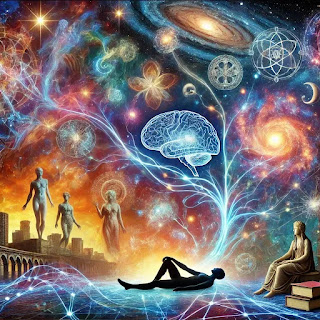The Grip of Guilt and the Tremor of Convulsions: An Introspective Journey
Guilt is one of those emotions that lie heavy on the soul, a shadow that stretches across time, clinging to moments that haunt us, reminding us of our own perceived inadequacies, errors, or regrets. It's a feeling that often creeps in unannounced, sometimes justified, sometimes exaggerated, and often unnecessary. It has a way of coloring our lives, turning once bright experiences into muted tones. In its wake, guilt can even manifest physically, bringing forth symptoms as severe as convulsions. But what is the connection between this sense of guilt and such extreme physical responses? And why does it leave so many feeling helpless?
The Anatomy of Guilt
Guilt begins as a whisper of doubt, questioning our morals and decisions. It’s a voice that taps into our core, evaluating our actions against an invisible standard that we may never fully reach. Some believe guilt has roots in morality and serves as a natural deterrent, reminding us of consequences and prompting us to align with our values. But often, guilt becomes an overwhelming presence that morphs into a state of self-punishment. We carry its weight through life, sometimes due to past mistakes, but often due to experiences beyond our control.
Yet not all guilt is self-inflicted. Society, religion, and upbringing can implant guilt in our psyche, setting up layers of expectations that are sometimes impossible to meet. We grow up internalizing these standards, making them part of our subconscious and our very identity. When we fall short, the guilt that arises can be swift and brutal, a blow that can shatter self-worth and turn our minds into their own worst enemies.
Guilt’s Physical Manifestation: The Shaking Body and Convulsions
For some, guilt transcends the mind and takes a toll on the body, bringing about a range of physical symptoms, including muscle tension, headaches, fatigue, and even convulsions. Convulsions are typically associated with neurological disorders, like epilepsy, yet there exists a phenomenon known as "psychogenic non-epileptic seizures" (PNES), where emotional and psychological factors are primary triggers. PNES can be a startling manifestation of intense stress, unresolved trauma, or, indeed, guilt. These episodes can mimic the physical experience of seizures, with symptoms ranging from twitching and tremors to full-body convulsions, all without a neurological basis.
When it comes to guilt, the mind's inclination to punish itself can cause the body to react as if it is in danger. The amygdala, a part of the brain involved in processing emotions, activates the body’s fight-or-flight response. In this heightened state, if there is no immediate action to take or if the emotions remain unresolved, the physical tension may evolve into tremors or convulsions, especially in those with underlying psychological vulnerability.
The Psychological Implications of Convulsions from Guilt
The experience of convulsions due to guilt creates a vicious cycle. Physical symptoms worsen the emotional burden, leading to more self-blame, shame, and distress. As guilt becomes a more physical experience, the emotional side also grows darker, entangling the person in layers of despair. Convulsions serve as reminders of unresolved guilt, turning each episode into a painful confrontation with past regrets. Over time, this can lead to depression, anxiety, and even a loss of sense of self, as if guilt has taken ownership of their very identity.
One of the most troubling aspects of guilt-induced convulsions is the isolation they create. As these episodes are less common and less understood, those who suffer from them may struggle to find support or even believe that what they’re going through is real. This loneliness compounds the guilt, making it feel like a punishment meant solely for them.
Breaking Free: Moving Beyond Guilt’s Grip
Finding relief from the dual impact of guilt and convulsions requires a multi-faceted approach. At its core, healing involves both understanding and forgiving oneself. Self-compassion, while simple in concept, is often one of the hardest steps for those burdened by guilt. It means acknowledging the mistakes without allowing them to become the definition of one’s character. Therapy can play a significant role in this journey, as it provides a safe space to explore the origins of guilt and release some of its hold.
For those experiencing convulsions, cognitive-behavioral therapy (CBT) and somatic therapies can help address the physical responses tied to guilt. By learning techniques to manage stress and retrain the body's reactions, the body gradually releases its tight grip on guilt’s physical manifestations. Mindfulness practices also encourage a person to observe their guilt rather than be consumed by it, shifting from a reactive state to one of greater acceptance.
The Path Forward
Living with guilt and its physical effects is a journey that requires time, patience, and gentleness toward oneself. Yet, by acknowledging guilt as a part of the human experience, rather than an enemy, we can begin to unburden ourselves from its weight. This process, though difficult, opens the door to a new understanding of self-compassion. It allows us to embrace both our mistakes and our resilience, reclaiming a sense of peace.
While guilt may never fully disappear, learning to walk alongside it, rather than being crushed by it, is the path to healing. For many, this transformation marks not only a return to wholeness but also a newfound ability to face the complexities of life with a steadier heart, a calmer body, and an acceptance that peace is possible—even after guilt’s most profound grip.






Comments